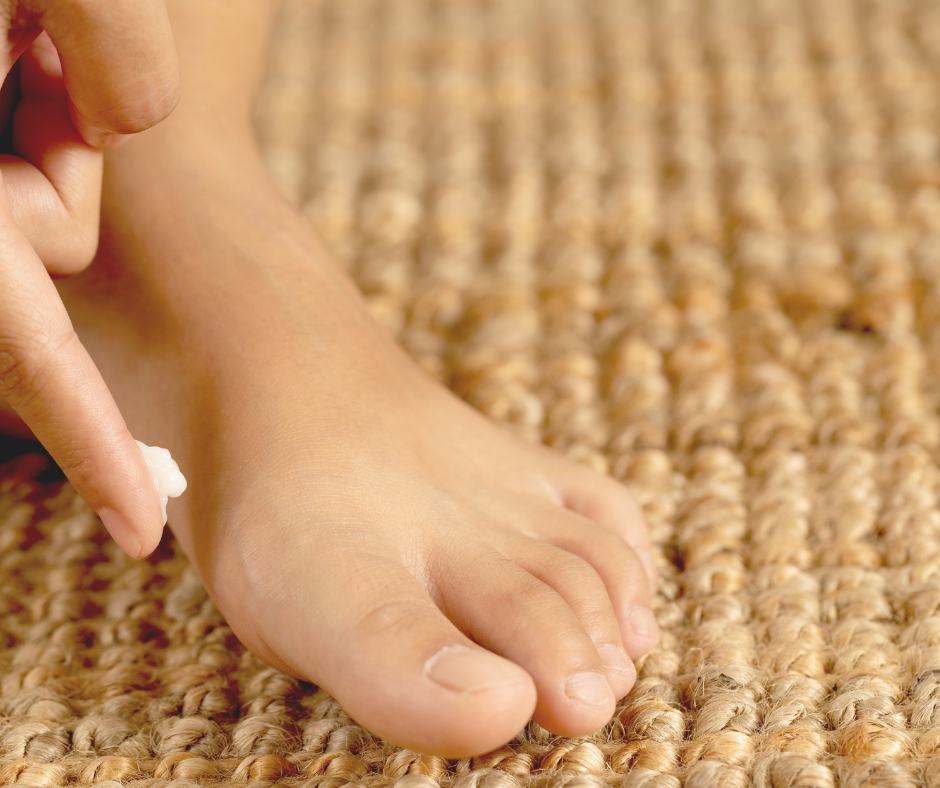Is Tallow Antifungal?

In today's quest for natural skincare ingredients, tallow has emerged as a fascinating option. Derived from rendered animal fat, often sourced from beef or mutton, tallow boasts a rich history across various cultures for its believed skincare benefits. Its properties, ranging from moisturising abilities to potential antimicrobial effects, have captured the attention of both skincare enthusiasts and researchers. Among its attributes, one particularly intriguing aspect is its suggested antifungal properties. In this blog post, we delve into the question: Is tallow truly antifungal?
Understanding Antifungal Properties
Antifungal agents are vital in combating fungal growth, which can lead to various infections, from common skin conditions like athlete's foot to more severe systemic infections with significant global health implications. Given the prevalence and diversity of fungal infections, effective antifungal treatments are crucial for managing these conditions and preventing complications.
In the pursuit of alternative therapies, natural substances with antimicrobial properties have garnered significant interest. Over the years, essential oils, plant extracts, and animal-derived substances have been extensively researched for their potential antifungal effects. These natural compounds offer a promising avenue for exploring new treatments, especially as concerns about antibiotic resistance continue to rise.
Among these natural remedies, tallow has stood out due to its rich composition of fatty acids and other bioactive compounds. Tallow, derived from rendered animal fat, typically from beef or mutton, has a long history of traditional use in skincare and medicine across different cultures. Its potential antifungal properties have recently drawn attention from researchers and skincare enthusiasts alike.
The fatty acid profile of tallow, characterised by a blend of saturated and unsaturated fatty acids, contributes to its antimicrobial potential. Saturated fatty acids, like palmitic acid and stearic acid, have demonstrated antimicrobial effects by disrupting the cell membranes of microorganisms, including fungi. Additionally, tallow's emollient properties can moisturize and protect the skin, potentially aiding in the prevention and treatment of fungal infections.

Exploring Tallow's Composition
At its core, tallow consists mainly of triglycerides, the primary storage form of fat in animals. These triglycerides contain various fatty acids, both saturated and unsaturated, which play crucial roles in determining tallow's properties and therapeutic effects.
The fatty acid composition of tallow varies based on factors such as the animal source and diet, leading to variations in its properties. Saturated fatty acids, including palmitic acid and stearic acid, are prominent constituents of tallow. These fatty acids have been extensively studied for their antimicrobial properties.
In addition to fatty acids, tallow contains a range of other bioactive compounds, including vitamins and minerals, that contribute to its skincare benefits. Vitamins A, D, E, and K are present in varying amounts in tallow, providing nourishment and antioxidant protection to the skin. These vitamins are essential for maintaining skin health, supporting cellular function, and combating oxidative stress. Moreover, tallow's mineral content, which includes calcium, phosphorus, and magnesium, enhances its overall nutritive value for the skin.
Apart from its biochemical composition, tallow also exhibits emollient properties that are beneficial for skin health. Emollients soften and soothe the skin, helping to maintain its moisture balance and integrity. By forming a protective layer on the skin's surface, tallow helps prevent moisture loss and protect against external irritants. This barrier function is particularly relevant in the context of fungal infections, as it can fortify the skin's natural defences and reduce the risk of fungal proliferation.

Research on Tallow's Antifungal Potential
While anecdotal evidence and historical use suggest that tallow may possess antifungal properties, scientific exploration in this area remains limited. Nonetheless, studies on related substances, such as fatty acids and natural oils, provide some insight into tallow's potential antifungal activity. Certain fatty acids found in tallow have demonstrated inhibitory effects against various fungi, including Candida species.
Practical Considerations and Future Directions
Despite the promising potential of tallow's antifungal properties, several practical considerations should be noted. Firstly, the source and quality of tallow can influence its efficacy and safety. Ideally, tallow used in skincare products, such as tallow bar soap or unscented tallow moisturising cream, should be sourced from pasture-raised animals without additives or contaminants.
Furthermore, individual skin sensitivities and fungal susceptibility vary, meaning tallow-based products like FatCowSkin's tallow soap or the convenient fatcow soap bag may not suit everyone. Patch testing and consultation with a healthcare professional are advisable before incorporating new skincare ingredients, including tallow.
Looking ahead, further research is needed to understand the mechanisms underlying tallow's potential antifungal activity and to evaluate its efficacy in clinical settings. Controlled studies comparing tallow-based formulations to conventional antifungal treatments would provide valuable insights into its therapeutic potential.
In conclusion, while tallow's antifungal properties show promise, scientific evidence supporting its efficacy remains limited. Nevertheless, its rich fatty acid composition and historical use suggest that it may offer skincare benefits, including potential antimicrobial effects, as seen in the various tallow soap benefits. As interest in natural remedies grows, FatCowSkin presents an intriguing avenue for exploration in the pursuit of effective and sustainable skincare solutions. Continued research and clinical trials are essential to fully understand and harness the therapeutic potential of this ancient ingredient.





